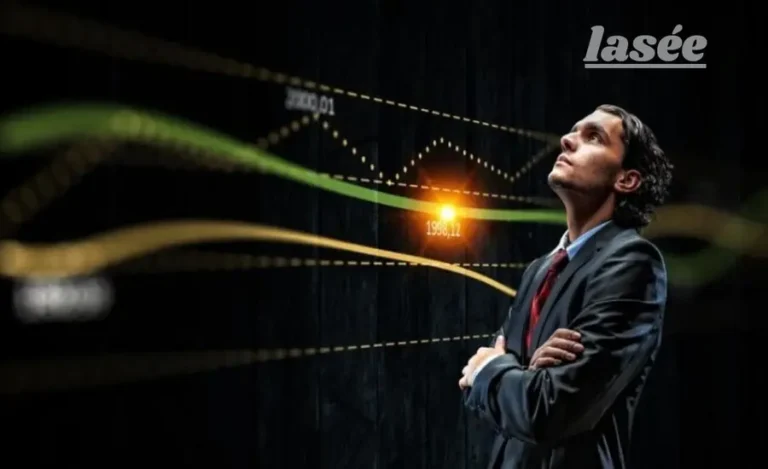Sodaimar: Exploring the Depths of a Unique Concept
Introduction
In an era where innovation and creativity converge, new concepts frequently emerge, offering novel perspectives on old ideas. One such concept that has recently captured the imagination of thinkers, creators, and enthusiasts alike is “Sodaimar.” While its origins might be shrouded in a degree of mystery, the exploration of Sodaimar reveals a rich tapestry of ideas that challenge conventional boundaries and offer fresh insights into various aspects of human experience. Furthermore, this article delves into the essence of Sodaimar, exploring its significance, implications, and potential applications across different domains.
The Origins of Sodaimar
Sodaimar is a term that defies easy categorization. Its roots can be traced to a combination of philosophical, artistic, and scientific inspirations. The concept emerged from a desire to bridge the gap between traditional disciplines and modern innovations. By examining the etymology and historical context of Sodaimar, one can uncover its underlying principles and the vision behind its inception.
Historically, Sodaimar has been linked to a broader philosophical movement that seeks to transcend conventional paradigms and embrace a more holistic view of reality. This movement emphasizes the interconnectedness of various elements within a system, be it natural, societal, or conceptual. The term itself is believed to be a portmanteau of several languages, reflecting its multi-faceted nature. As such, Sodaimar represents a synthesis of diverse ideas, aimed at fostering a deeper understanding of complex phenomena.
The Core Principles of Sodaimar
At its heart, Sodaimar is characterized by several core principles that define its approach to understanding and interpreting the world. These principles include:
- Interconnectedness: Sodaimar posits that all elements within a system are interrelated. This principle challenges reductionist approaches that isolate individual components, advocating instead for a comprehensive perspective that considers the interactions between various elements.
- Holistic Perspective: Emphasizing the importance of viewing systems as a whole, Sodaimar encourages an appreciation for the broader context in which individual components operate. This holistic approach helps to uncover underlying patterns and relationships that might otherwise remain obscured.
- Dynamic Evolution: Sodaimar recognizes that systems are not static but continuously evolving. This principle highlights the need to account for change and adaptation, reflecting the fluid nature of reality and the ongoing development of ideas and concepts.
- Transdisciplinary Integration: Furthermore, by integrating insights from multiple disciplines, Sodaimar seeks to create a more comprehensive understanding of complex issues. This transdisciplinary approach fosters collaboration and innovation, breaking down traditional barriers between fields of study.
Applications of Sodaimar
The principles of Sodaimar have far-reaching implications across various domains. Its application can be observed in several key areas:
- Philosophy and Thought: In philosophy, Sodaimar offers a framework for re-evaluating established theories and exploring new perspectives. By adopting a holistic and interconnected approach, philosophers can gain a deeper understanding of complex concepts and their implications for human experience.
- Art and Creativity: The artistic realm benefits from Sodaimar’s emphasis on dynamic evolution and transdisciplinary integration. Artists and creators can draw inspiration from diverse sources, blending different styles and mediums to produce innovative and thought-provoking works.
- Science and Technology: In science and technology, Sodaimar encourages researchers to consider the broader context of their work. By acknowledging the interconnectedness of various factors, scientists and engineers can develop more effective solutions and advance our understanding of complex systems.
- Education and Learning: Sodaimar’s principles can transform educational practices by promoting a more holistic approach to learning. Educators can design curricula that reflect the interconnected nature of knowledge, fostering a deeper understanding of subject matter and encouraging critical thinking.
- Social and Environmental Issues: Furthermore, addressing complex social and environmental challenges requires a comprehensive perspective. Sodaimar’s emphasis on interconnectedness and dynamic evolution can inform strategies for tackling issues such as climate change, inequality, and resource management.
Case Studies: Sodaimar in Action
To illustrate the practical application of Sodaimar, consider the following case studies that highlight its impact across different fields:
- Environmental Conservation Efforts
Furthermore, in the realm of environmental conservation, Sodaimar principles have been employed to develop innovative approaches to sustainability. One notable example is the integration of ecological, social, and economic factors in conservation planning. By recognizing the interconnectedness of these elements, conservationists can design strategies that address the root causes of environmental degradation while promoting long-term resilience.
- Interdisciplinary Research Initiatives
Several research initiatives have adopted Sodaimar’s transdisciplinary approach to tackle complex scientific challenges. For instance, the study of climate change often involves collaboration between climatologists, economists, sociologists, and policy experts. By integrating insights from these diverse fields, researchers can develop more comprehensive and effective solutions to mitigate the impacts of climate change.
- Artistic Collaborations
Furthermore, in the arts, Sodaimar-inspired collaborations have led to the creation of groundbreaking works that transcend traditional boundaries. One example is the fusion of visual art, music, and technology to produce immersive and interactive experiences. These collaborations exemplify the dynamic evolution of artistic expression and the benefits of a holistic approach to creativity.
Challenges and Criticisms
While Sodaimar offers a compelling framework for understanding and addressing complex issues, it is not without its challenges and criticisms. Some of the key concerns include:
- Complexity and Ambiguity: The holistic and interconnected nature of Sodaimar can sometimes lead to complexity and ambiguity, making it difficult to apply its principles in practical contexts. Critics argue that this can hinder effective decision-making and problem-solving.
- Integration of Diverse Perspectives: While transdisciplinary integration is a strength of Sodaimar, it also poses challenges in terms of coordinating and synthesizing insights from different fields. Ensuring that diverse perspectives are effectively integrated requires careful consideration and collaboration.
- Scalability and Implementation: Furthermore, applying Sodaimar principles on a large scale can be challenging, particularly in fields where traditional approaches have been deeply entrenched. Implementing new strategies and practices may require overcoming resistance and adapting existing structures.
Future Directions for Sodaimar
As Sodaimar continues to evolve, several potential directions for its future development and application can be identified:
- Further Research and Exploration: Ongoing research into the principles and applications of Sodaimar can provide deeper insights and refine its theoretical foundations. Exploring new contexts and scenarios will help to expand its relevance and impact.
- Integration into Policy and Practice: To realize the full potential of Sodaimar, its principles can be integrated into policy and practice across various sectors. Furthermore, this may involve developing frameworks and guidelines that incorporate its core principles and address practical challenges.
- Educational Initiatives: Incorporating Sodaimar principles into educational curricula can foster a new generation of thinkers and practitioners who are equipped to navigate complex and interconnected issues. Educational initiatives can promote critical thinking, creativity, and interdisciplinary collaboration.
- Public Engagement and Awareness: Raising awareness of Sodaimar and its potential applications can help to garner support and encourage broader adoption. Public engagement initiatives can highlight their relevance and benefits, fostering a greater understanding of their principles and impact.
Conclusion
Sodaimar represents a unique and compelling concept that challenges conventional boundaries and offers fresh perspectives on complex issues. Its core principles—interconnectedness, holistic perspective, dynamic evolution, and transdisciplinary integration—provide a framework for understanding and addressing a wide range of phenomena. While there are challenges associated with its application, the potential benefits of Sodaimar are significant, spanning philosophy, art, science, education, and social issues. As the concept continues to evolve, it holds promise for fostering deeper insights, innovative solutions, and transformative change across various domains.





